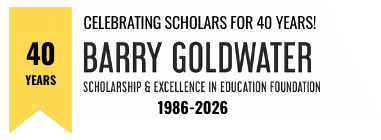“The Goldwater scholarship process empowered me to trust my research instincts, gain confidence in my abilities, and recognize the powerful influence of encouraging, supportive mentors.”
When I was young, my grandfather began suffering from a devastating neurological disorder. A research doctor prescribed a therapeutic that dramatically eased his painful, chronic symptoms and improved his prognosis. This miraculous therapy is what first ignited my interest in biology and led me to start asking simple questions: Why do some people get sick? How can they become less sick? When I began college, I wanted to study biology so that I could explore these questions and, hopefully, make magical discoveries like those that helped my grandfather.
As an incoming freshman at Montana State University, I joined Dr. Frances Lefcort’s lab and began studying a neurological disorder called Familial Dysautonomia. One of the hallmarks of this disease is a severe loss of neurons involved in pain and temperature sensation. During my four years in the lab, I aimed to identify therapeutic compounds and analyze their potential to rescue neurons using a mouse model of the disease. Ultimately, our goal was to find solutions to ameliorate symptoms for patients. This work culminated in a publication and a pending clinical trial.
From my first day, Dr. Lefcort was welcoming and highly supportive of my research. However, I would have never walked into Dr. Lefcort’s office without the unwavering encouragement and dedication provided to me by Goldwater Representative, Dr. Ilse-Mari Lee. Drs. Lee and Lefcort served as powerful mentors and continuously challenged me to stretch my limits. With their assistance, I applied for the Goldwater scholarship, and in 2017, I became a Goldwater Scholar. This recognition empowered me to trust my research instincts, gain confidence in my abilities, and recognize the powerful influence of encouraging, supportive mentors.
My work with Dr. Lefcort gave me the confidence to explore new research interests at other institutions. During a student exchange at the University of Oslo, I contributed to an ongoing research project to identify candidate genes involved in the specification of different projection neuron groups. While this work exposed me to basic biology research, it felt disconnected from the questions that excited me when I was young. In an effort to explore more translational research, I spent a summer at the Fred Hutchinson Cancer Research Center where I investigated a potential oncogenic driver of rhabdomyosarcoma. While this work did not yield conclusive results, I was excited by its medical relevance and very motivated to pursue graduate school.
As I continued doing research, I found myself most excited by biological puzzles that quantitative, mathematical methods can solve. It wasn’t until applying to graduate schools that I realized that interdisciplinary research combining biology and math even existed. Again, with encouragement from the same mentors who challenged me to apply for the Goldwater scholarship, I switched fields.
Today, I am a doctoral student at the University of Washington working with Dr. Frederick Matsen. With his guidance, I am combining my fascination about biology with my excitement for computational methods, while studying the genetic determinants of immune receptor diversity. My work will explore how an individual’s genetic background may influence their infection susceptibility and response. More broadly, it could partially answer the questions that pulled me to biology as a child concerning how and why people get sick.
The Goldwater scholarship process propelled me to explore various research fields until I found one that excites me the most. I am thankful to be on an exciting, new research path, under the guidance of Dr. Matsen. One day, I hope to follow in the footsteps of my many mentors by providing other aspiring scientists with the inspirational foundation and encouragement that my mentors provided for me.

